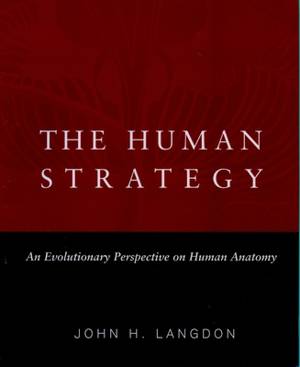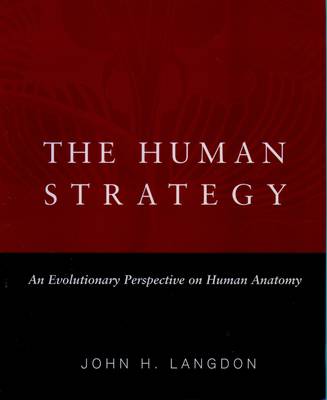
En raison d'une grêve chez bpost, votre commande pourrait être retardée. Vous avez besoin d’un livre rapidement ? Nos magasins vous accueillent à bras ouverts !
- Retrait gratuit dans votre magasin Club
- 7.000.000 titres dans notre catalogue
- Payer en toute sécurité
- Toujours un magasin près de chez vous
En raison de la grêve chez bpost, votre commande pourrait être retardée. Vous avez besoin d’un livre rapidement ? Nos magasins vous accueillent à bras ouverts !
- Retrait gratuit dans votre magasin Club
- 7.000.0000 titres dans notre catalogue
- Payer en toute sécurité
- Toujours un magasin près de chez vous
The Human Strategy
An Evolutionary Perspective on Human Anatomy
John H Langdon
Livre relié | Anglais
83,95 €
+ 167 points
Description
The Human Strategy brings a unique and accessible evolutionary approach to the study of human anatomy. Bridging the disciplines of anthropology and biology, it acknowledges that human beings are vertebrates, mammals, and primates, and that the anatomical systems of the human body reflect adaptations from each of these levels of classification. John H. Langdon identifies the significance of those traits that make humans distinct from other vertebrates, exploring adaptations to the musculoskeletal, nervous, and reproductive systems and to systems of homeostasis. He addresses the question: "What functions are represented in the body structure and what history lies behind them?" Framing the answers in terms of physiological goals, functional adaptation, and evolutionary contingency, he covers both soft- and hard-tissue systems. Langdon considers how behavioral changes in our ancestors--bipedalism and a changing diet that incorporated meat--relate to anatomical changes in nearly every organ system and contributed to expansion of the brain, a higher energy budget, and a prolongation of life history.
Integrating the most recent research in the field, The Human Strategy features more than 250 clear and well-labeled illustrations that explain anatomical systems and processes. It includes tables that detail the differences between the major classes of vertebrates, helping students to put evolutionary variations among species in context. A comprehensive glossary and an extensive bibliography are also provided. Ideal for upper-level undergraduate and graduate courses in human evolutionary anatomy, The Human Strategy can also be used in human anatomy and human evolution courses. Taking a more complete look at the human body in an evolutionary sense than any other existing text--and demonstrating that the human present is best understood in terms of our past--this volume serves as an excellent starting point for discussion, critical thinking, and further research.
Integrating the most recent research in the field, The Human Strategy features more than 250 clear and well-labeled illustrations that explain anatomical systems and processes. It includes tables that detail the differences between the major classes of vertebrates, helping students to put evolutionary variations among species in context. A comprehensive glossary and an extensive bibliography are also provided. Ideal for upper-level undergraduate and graduate courses in human evolutionary anatomy, The Human Strategy can also be used in human anatomy and human evolution courses. Taking a more complete look at the human body in an evolutionary sense than any other existing text--and demonstrating that the human present is best understood in terms of our past--this volume serves as an excellent starting point for discussion, critical thinking, and further research.
Spécifications
Parties prenantes
- Auteur(s) :
- Editeur:
Contenu
- Nombre de pages :
- 384
- Langue:
- Anglais
Caractéristiques
- EAN:
- 9780195167351
- Date de parution :
- 10-02-05
- Format:
- Livre relié
- Format numérique:
- Genaaid
- Dimensions :
- 193 mm x 244 mm
- Poids :
- 852 g

Les avis
Nous publions uniquement les avis qui respectent les conditions requises. Consultez nos conditions pour les avis.






